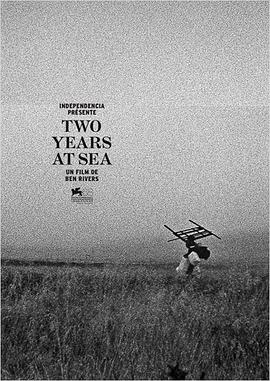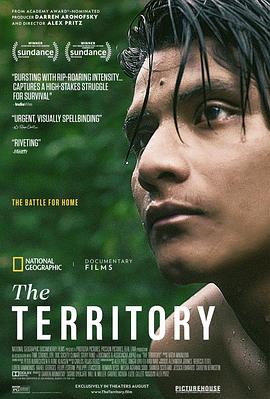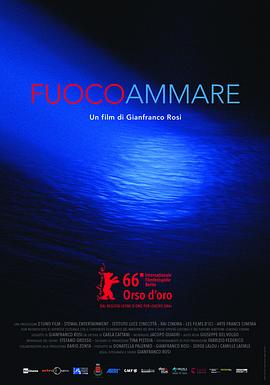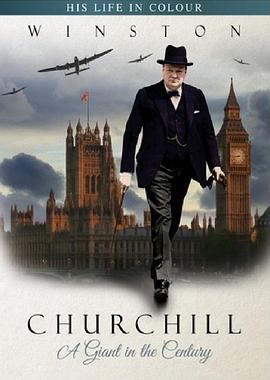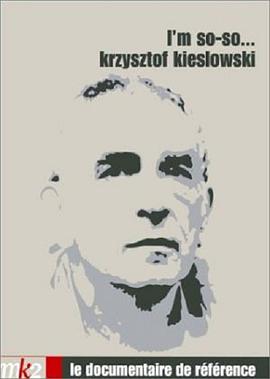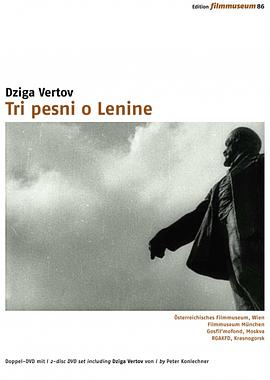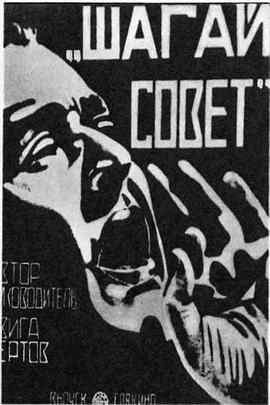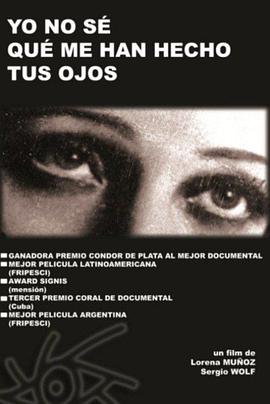影片库
这部围绕着以色列隔离带的纪录片由出生在摩洛哥的犹太女导演Simone Bitton制作。对以色列国防部长的访谈贯穿全片,他声称隔离带的作用是防止阿拉伯人恐怖袭击与盗窃,这条每千米造价200万美元的隔离带根据作用与施工环境的不同有多种构建形式:农田上的铁丝网妨碍了阿拉伯农民收获果实,有时只能看着果实烂在地里;居民区中间的水泥墙、哨卡分开了犹太人与阿拉伯人,孩子们在高墙下成长……为养家糊口而参与围墙施工的巴勒斯坦工头叮嘱导演去掉他的形象,因为这可能导致他被追杀。在影片最后,加沙地区又一次被封锁了。
本片获2004年马赛纪录片电影节最高奖。2005年圣丹斯电影节纪录类评委会特别奖。
这部纪录片拍摄了一位叫Jake的人的日常。他独自住在偏远苏格兰的森林中,以一种绝对孤独的存在方式自处。这种生活方式是他的追求,在海上工作两年后,他终于实现了与世隔绝的梦想。道狭草木长,夕露沾我衣。衣沾不足惜,但使愿无违。
佛教由古印度的悉达多·乔达摩(佛教信徒尊称释迦牟尼)在大约西元前6世纪创立,在世界上尤其是对于东亚地区有过广泛的影响。佛教目前从人数上来说为世界第四大宗教,位于基督教,伊斯兰教和印度教之后,全世界约有4亿左右信众。
“佛”,全称“佛陀”,意思是觉悟者。佛教重视人类心灵的进步和觉悟。人和其他众生一样,沉沦于苦迫之中,并不断的生死。惟有断灭贪、嗔、痴的人才能脱离轮迴,悉达多就在35岁时成佛,并对众人宣扬他所发现的道理。佛教徒的目的即在於从悉达多的教训裏,看透苦迫的真相,最终超越生死和苦、断尽一切烦恼。
现在的佛教按教理划分可分为上座部佛教和大乘佛教两大隻。佛教按历史时期划分可分为原始佛教,部派佛教和大乘佛教三个时间段,其中部派佛教又被称为小乘佛教。
佛教按地理位置可分为南传佛教与北传佛教二大传承,随着藏传佛教的出现,北传佛教又分为汉传佛教与藏传佛教。南传佛教大致上就是上座部佛教。佛教按修行和传授方式可分为显教和密教。密教大致包括了印度的金刚乘佛教和西藏的藏传佛教。按显教密教划分法,除了密教其他的就全部是显教。详细的分类请参考佛教宗派。
佛教目前主要流行於东亚及南亚等地区。
这是一部伟大的电影纪录片,拍摄于1962年, 发行于1963年,出自伊朗历史上最伟大的女诗人,哲学家及电影导演 Forugh Farrokhzad。这是她唯一传世的电影作品!是世界纪录片史中难得一见的奇葩。
此片虽然只有短短20分钟,但影片忠实纪录了伊朗一个麻风村里所有的村民的生活点滴,他们她们由于麻风病而变得相貌丑陋,但他们她们却从未放弃生活, Forugh Farrokhzad用自己手中的摄影机,用质朴感人,优美简洁的黑白影像告诉我们丑陋并不是一种障碍,只要我们别放弃生活。
人民爱戴而又有争议性的女诗人Forugh Farrokhzad 去了阿塞拜疆,拍摄了这部短片。 在Farrokhzad 以一种悲伤的低调诵读她自己的诗歌的同时,影片阴郁地展现了管弦乐下的失落村庄。 五年后, 在她已经在伊朗的写作文坛上建立了几乎传奇式的地位时,她在一次车祸中丧生,时年32岁, 从而成为以后几代愤怒波斯妇女们的女权主义的试金石。
一部难得的片子,通过毕加索的家人,前妻,画商,朋友的解读,我们才知,尽管毕加索的晚年作品濒临色情的边缘,但也让我们见识了什么是不顾一切狂野地表达自己突破绘画技巧!而为了悟透男人与女人,性欲与爱的关系,纪录片里会解密他是如何做的。毕加索一生都受性的诱惑,他在作品与生活中都全身心地享受性的乐趣。毕加索每次换个女人,也是每次换个标准,换个视觉,因为他要全部占有女人,直至她的视觉;这时他自己也换了个人。“标准”、“改变视觉”、“性的对话”、“性与心的转换”、“占有女人直至她的视觉”,这是毕加索的艺术中的性心理学的一条粉红色线。如果狄德罗知道了,会说这是极佳的心理临床学。因为他早在两个半世纪以前就说:“一切生物都是你中有我,我中有你……任何禽兽都多少是人,任何矿物都多少是植物,任何植物都多少是禽兽……人是什么?人是某类倾向的总和。”
随着巴西非原住民的到来,乌胡伊乌瓦瓦族(Uru-eu-wau-wau)土著居民的人口发生缩减,文化受到威胁。尽管对自己的热带雨林领土掌控着承诺中的自治权,他们却面临着破坏性伐木与采矿活动的非法入侵,以及最近在总统雅伊尔·博索纳罗等右翼政客的煽动下的土地侵占。随着森林滥砍滥伐的升级,这一利害关系已牵连着全球的命运。
一部由两位美国年轻导演史杰鹏和张莫导演的中国题材电影。该电影时长75分钟,是一部以独特大胆的视觉在四川成都人民公园进行的经验、结构主义纪录片。该片完全展现中国都市的悠闲生活,与王兵所展现的穷困乡村生活产生强烈对比。由于摄像机的拍摄角度完全贯穿整个公园,它捕 捉并记录了千百中国都市人外出消遣、放松、交流以及某种概念上自由的行为:吃东西,闲逛,唱歌,练毛笔字,或者仅仅是看看周围其他人。当画面慢慢集中仿佛是一个又欣喜又恍惚的凹陷视觉的时候,这种观看忽然间变成了某种舞蹈,逐渐达到一种雀跃的高潮,就像是人、动作、音乐、影像以及各种声音都交织在一起:这就几乎可以说是电影所能达到的纯粹的愉悦。
《时间的风景》是备受赞誉的摄像师和导演,汤姆·劳的首部影片。影片采用慢镜头与定时拍摄的摄影技术,向我们展示了美国西南部陆地、人文以及野外令人惊叹的瑰丽景色。为拍摄本影片,劳开着他的丰田敞篷小卡车奔走于美国西南部,历时两年。
《时间的风景》的拍摄、剪辑和色彩分级均采用4K 分辨率(4096×2304像素),是世界上首部面向公众发售的4K电影。
Literary phenomenon. Revolutionary storyteller. Feminist icon. Novelist Jackie Collins’ trailblazing and glamorous life is remembered and reconsidered in Laura Fairrie’s admiring documentary portrait.
童年时期,以色列导演随父母在印度南部灵修,为了「真理」,他们被教导要信奉灵师,无私奉献,一切行径不得对外公开,戒慎恐惧地严守秘密长达20年。成年后,他鼓起勇气踏上追索之旅,寻找曾共处灵修营的友人,讨论彼此被禁谈的童年回忆,并质问虔诚的父母对过去的看法。深藏内心深处的创伤,是否能被疗愈?
谢尔盖·洛兹尼察是一位东欧历史的出色记录人。他的记录既涵盖了最近的事件,如《中央广场》(2014)中的乌克兰叛乱,也涵盖了更早的事件,如《国家葬礼》(2019)中的斯大林葬礼。他在展现过去时总是保持警觉,巧妙地运用档案素材,使观众仿佛成为现场目击者。在这部讲述1989年到1991年间,波罗的海国家立陶宛脱离苏联的影片中也是如此。这一以大量歌唱进行和平抗议的时期被称为"歌唱革命"。
作为独立运动的发起人之一,现年88岁的维陶塔斯·兰茨贝吉斯当时处于历史剧变的中心。借助大量关于示威活动、党代会和苏联军事干预的档案素材,他富于洞察力的思考得到补足。冗长的档案片段见证了在通往自由的道路上,兰茨贝里斯和他的同胞们所需要付出的耐心。这是一堂关于苏联解体的细致而引人入胜的历史课。
本片获IDFA竞赛单元最佳影片奖、最佳剪辑奖。
值英玛褒曼诞辰百年纪念,受其启蒙的德国新电影领军人物之一冯佐妲,回溯大师的一生传奇。她走访镜头前后与大师合作无间的莉芙乌曼、深受其影响的新一代电影人包括奥利维亚阿萨耶斯、鲁宾奥士伦、卡洛斯索拉,及褒曼的儿子等,从他们的真知灼见,呈现褒曼的立体人像。本纪录片亦辑选了褒曼的珍贵片段、探讨其电影主题、到访其灵感泉源之地如斯德哥尔摩皇家戏剧院、以至回顾因税务问题而流亡德国的十年岁月,冯佐妲凭女性独有眼光和触角,层层剖析褒曼复杂的内心世界及光影迷思。
本片是享有“纪录片之父”声誉的美国纪录片导演罗伯特•弗拉哈迪的第一部纪录片电影,记录了加拿大魁北克省北极圈内哈德逊湾的伊努朱亚克附近因纽特人首领纳努克一家人从1920年8月到1921年8月期间的日常生活,包括与白人交易、捉鱼、捕猎海象海豹、灶火烹饪,以及建筑冰屋的场景,开创了人类学社会影像记录的起点。弗拉哈迪在本片中的摆拍和场景重现曾引起广泛争议,比如隐瞒纳努克平时用猎枪狩猎的事实,刻意表现因纽特人的传统鱼叉狩猎法;又比如为了拍摄冰屋内纳努克一家清早起身的场景,去掉一半冰屋采光等。
本片是历史上第一部全长纪录片,于1989年被美国国会图书馆选入“国家电影记录册”。
肥胖或超重会对一个人产生多大的影响?在镜子面前自我否定,在他人面前抬不起头,在梦想面前望而却步。由于一次分手便开始以暴饮暴食来处理情绪导致最终超重的肯尼·塞勒斯,终于决定做些改变。他将开始为期40天的清水禁食,并用他的故事告诉全世界的肥胖人群,要从此时此刻开始给自己定下目标,持之以恒地努力,不放弃不屈服,用坚定的信念走出困境,才能真正活着。要成为自己理想中的样子,永远都不晚
19岁的Reyhaneh Jabbari因刺杀试图强奸她的男子而被伊朗神职人员判处死刑,这是一部由戛纳获奖女演员Zar Amir Ebrahimi讲述的紧张而令人心碎的电影。
单亲母亲安娜和她的四个孩子住在乌克兰顿巴斯战区前线。当外面的世界充满了爆炸和混乱,这个家庭试图把他们的家作为一个充满生命和光明的安全避难所 。每一个家庭成员都对电影都充满热情,因此他们试图拍摄一部受战时生活启发的电影。这一创作过程讨论了在灾难时期,电影能拥有什么样的力量。对安娜和孩子们来说,将创伤转化为艺术作品是保持人性的最终途径。
Since the uprising of a pro-Russian insurgency in eastern Ukraine in 2014, hundreds of women joined the army. Only a few made it to the front line. Filmmaker Masha embeds herself in the war zone to follow the daily life of the three of them.
在暗无天日的岁月,精神随着身体扭曲苟且,天地何止不仁?人魔同途互食,你只能认同与乞怜于本来最讨厌的人。摄制队追随志愿军深入被视为中东最危险的集中营,在卧底的帮助下,他们昼伏夜行,用最简单的装备和极迅速的行动,避开暴力,成功把伊斯兰国拘禁的雅兹迪族性奴拯救出来。影片平行剪接营内和回家后的生活对比,受害女子看似逐渐康复,但真正的意识形态毒害始终阴魂不散,令人持续不寒而栗。辛丹斯电影节世界纪录片最佳导演奖。
Marusya is 16 and, like many Russian teenagers, is determined to end her life. Then she meets her soulmate in another millennial, Kimi. They spend a decade filming the euphoria and anxiety, the happiness and misery of their youth, muzzled by a violent an autocratic regime in the midst of a “depressed Russia”. This film is a cry from the heart, a tribute to an entire silenced generation.
As a young Indian girl born outside caste, Thulasi is trying to box her way out of poverty, but the struggle for an independent life is hardest outside the ring.
他是足球天才、球場上帝、叛逆英雄,還是騙徒一名?馬勒當拿由窮家小子變身神一樣的球星,天價轉會拿玻里,世界盃上帝之手舉世聞名。然而登上事業頂峰,人生也開始變質走樣,在黑手黨橫行之城,沉淪毒海,私生活一塌糊塗。拍過《極速傳奇:冼拿》( 2 0 1 0 ) 及奧斯卡得獎作《A m y 》(2015)的卡巴迪亞,嘗試重組球王的璀璨歲月與成名代價,搜羅超過五百小時從未曝光珍貴片段,近距離呈現風光背後的失意、背叛、腐敗和救贖。
康城影展
法赫尔·巴瓦利是库尔德武装“佩什梅格”(敢死队)的一名军官。
2003年,萨达姆·侯赛因独裁政权崩溃后,法赫尔在执行反恐任务中,亲眼目睹大量平民惨遭地雷伤害,遂自告奋勇,只身犯险,只拿着一把钳子,在各处前线拆弹排雷。
法赫尔以惊人的勇气,出生入死,排除了成千个地雷,有时一年就处理了600多个,挽救了无数人的性命,他敏锐的嗅觉,也赢得美国驻军的高度评价。
助手用法赫尔的家用摄像机,记录下了他每次惊心动魄的排雷过程。
本片叙述了一位充满使命感和献身精神的男子,惊险感人的英勇故事。
On 6 May 1945, soldiers of the 88th US Infantry Division occupied the Himmlers’ family home in Gmund on Lake Tegernsee where they discovered hundreds of private letters, documents, journals and photographs. The film makes use of these materials and copious archive footage to sketch the biography of SS commander Heinrich Himmler who committed suicide at the end of May 1945 by taking a cyanide capsule. How did this nationalistic lower-middle-class man become Hitler’s henchman responsible for developing and executing the strategies that led to the murder of millions of Jews, homosexuals, Communists and Romany people? Where did his ideology originate? How did he see himself and how was he perceived in private by his wife Margarete, his daughter Gudrun and his mistress Hedwig? How could the man who often referred to so-called German virtues such as order, decency and goodness also write home in the midst of the war and Holocaust: ‘I am well in spite of my heavy workload’? What was it that caused his daughter to say after a visit to Dachau concentration camp: ‘It was lovely …’ A film about the pretensions of a mass murderer and the repression of any sense of guilt.
Berlinale 2014
苏利曼和“苏丹电影俱乐部”的另外三名成员决定重振一家旧电影院。他们不仅因为对电影的热爱和对恢复旧电影存量、再次关注苏丹电影历史的强烈渴望而团结在一起,而且因为他们都曾在流放中接受过电影教育。不知疲倦地,他们试图让影院老板站在他们一边,让这个地方重新运作起来,但他们一再发现自己遭到了相当大的阻力。同时,他们坐在一起谈论过去——包括他们作为对立艺术家遭受迫害甚至折磨的经历。他们还朗读流亡和梦想苏丹时写的旧信,在那里艺术和智力思想可以自由。“我们比他们聪明,但不如他们强大,”他们一致总结了他们的处境。正是在这些简洁的时刻,观众才能够感知到友谊,以及在为共同理想而斗争中存在的纽带和意识形态的团结。
苏哈伊布·加斯梅尔巴里把苏丹电影的历史放在影片的中心,同时也揭示了一个受到持续危机影响的国家的现状
Suliman and three further members of the ‘Sudanese Film Club’ have decided to revive an old cinema. They are united not only by their love of cinema and their passionate desire to restore old film stock and draw attention to Sudanese film history once more, but also by the fact that they have all enjoyed a film education in exile. Tirelessly, they try to get the cinema’s owners on their side and make the place operational again, but repeatedly find themselves up against considerable resistance. In the meantime, they sit together and talk about the past – including their experiences of persecution and even torture as oppositional artists. They also read out old letters written while in exile and dream of a Sudan in which art and intellectual thought can be free. ‘We are smarter than them, but not as strong,’ is how they unanimously summarise their situation. It is in laconic moments such as these that the viewer is able to perceive the friendship, as well as the bond and ideological solidarity that exists in the struggle for common ideals.
Suhaib Gasmelbari puts the history of Sudanese cinema at the centre of his film and at the same time sheds light on the current situation in a country shaken by ongoing crises.
Spanish-Mexican writer Paco Ignacio Taibo II hits the road to trace the footsteps of Ernesto "Che" Guevara and sheds new light on the revolutionary.
Frank Lloyd Wright is America's greatest-ever architect. However, few people know about the Welsh roots that shaped his life and world-famous buildings. Now, leading Welsh architect Jonathan Adams sets off across America to explore Frank Lloyd Wright's masterpieces for himself. Along the way, he uncovers the tempestuous life story of the man behind them and the significance of his radical family background.
In a career spanning seven decades, Frank Lloyd Wright built over 500 buildings, and changed the face of modern architecture: Fallingwater, the house over the waterfall, has been called the greatest house of the 20th century; the spiralling Guggenheim Museum in New York reinvented the art museum; the concrete Unity Temple was the first truly modern building in the world. But the underlying philosophy that links all Wright's buildings is as important as anything he built.
Those ideas were rooted in the Unitarian religion of Frank Lloyd Wright's mother. Anna Lloyd Jones was born and raised near Llandysul in west Wales and migrated to America with her family in 1844, most likely to escape religious persecution. Her son, Frank, was raised in a Unitarian community in Wisconsin, a small piece of Wales in America. The values he absorbed there were based on the sanctity of nature, the importance of hard work, and the need to question convention and defy it where necessary. Wright's architecture was shaped by, and expressed, these beliefs.
Frank Lloyd Wright set out to create a new American architecture for a new country. He built his own lifelong home in the valley he was raised in, and he named it after an ancient Welsh bard called Taliesin. It was the scene of many adventures - and a horrific crime. In 1914, a servant at Taliesin ran amok and killed seven people including Wright's partner, Mamah Cheney, and her two young children.
Wright rebuilt his home and went on to marry a Montenegrin woman, Olgivanna Milanoff, some 30 years younger than him. It was Olgivanna who struck upon the idea that saved Wright's career after the Wall Street Crash and personal scandal laid it low. She decided that her husband should take on apprentices and that the apprentices should pay for the privilege. The Taliesin Fellowship had a hands-on approach, with apprentices often building extensions to Wright's own houses, labouring and cooking for him. Somehow it worked, lasting for decades and nurturing hundreds of young talents.
Frank Lloyd Wright died in 1959 aged 91 while working on his final masterpiece, New York's incomparable Guggenheim Museum. He had been born in the wake of the American civil war, the son of a pioneer, and died a television celebrity, in the space age. He is buried in the shadow of Taliesin, alongside his Welsh ancestors.
A 150 years after his birth, Jonathan Adams argues that Frank Lloyd Wright is now a vitally important figure who can teach us how to build for a better world. Wright believed in what he called organic architecture; buildings that grace the landscape, express an idea of how to live and respond to individual needs. This bespoke approach - a philosophy, not a style - puts him at the heart of modern architectural thinking.
柏林的德国国会大厦是德国联邦议会的会址,也因此成为德国民主政治的最重要阵地。它曾遭受蔑视,被付之一炬,历经征服,被围墙封锁,见证了许多历史重大时刻——从德皇威廉二世对在落成典礼上对帝国议会大厦的嘲讽到社会民主党人在楼内宣布君主制的瓦解,从国会纵火案到成为德国分裂的象征,从艺术家克里斯托包裹整栋建筑的经典装置到建筑师诺曼•福斯特打造新玻璃穹顶,影片记录了位于柏林的德国国会大厦作为“幸存艺术家”的身份变换、在经遍德国历史的高潮与低谷后最终成为德国统一和民主象征的过程。历史学家米夏埃尔•库伦、明星建筑师诺曼•福斯特勋爵、联邦议会主席沃尔夫冈•硕伯勒、前联邦议会议长丽塔•聚斯穆特和包裹艺术家克里斯托为本片接受了采访。(小易甫字幕组)
To the south of the Indian metropolis of Surat in Gujarat province lies a vast industrial zone that has been growing ever since the 1960s. Director Rahul Jain filmed the grueling daily routine in just one of the many textile factories there. In the factory, man and machine seem to have fused into one being. It is dark and dank, and barely any daylight penetrates the space. The labor is heavy and mind-numbing, and the work days seem endless. We are drawn into a gloomy world where the cacophonous beat of machinery sets the rhythm of toil. Jain is as interested in the mysterious connection between worker and product (the fabrics are treated mechanically, but also with love) as he is in the degrading conditions. Each shift lasts 12 hours, for adults and children alike, and wages are extremely low. Short interviews are interspersed throughout the observational sequences, some of which are captivating in their beauty while others are painful to watch – such as when we see a boy nodding violently in his struggle to stay awake. (From IDFA official website)
A film on the come back of exorcism in the contemporary world. Our world. Each year a growing number of people call their sense of unease “possession.” In Italy, Europe, worldwide. The Church answers to this spiritual emergency nominating an increasing number of exorcist priests and organizing training courses. Father Cataldo is one of the most sought-after exorcists in Sicily and elsewhere; he is famous for his tireless fighting spirit. Every Tuesday Gloria, Enrico, Anna, and Giulia, along with many others, attend Father Cataldo’s mass for deliverance, trying to find a cure for a sense of discomfort that has no answer nor a name. Whether believers or not, how far are we prepared to go to get recognition for our own disease? What are we prepared to do to be delivered from it, here and now? This is the story of a meeting between the act of exorcism and everyday life, where the contrasts between the ancient and modern, the religious and profane, are at times disturbing and at others exhilarating. A film not about religion, but about how religion can be experienced.
近年科学界、出版界,与纪录片频道打龙通,推出“没有人的地球”末世想像。来自奥地利的葛哈特大概认为电视太细、CG 太假,讨论太消费浅薄,于是以在地真实拍摄,体现心中的荒凉情状。起点是日本,先叫我们一起沉思福岛──仓促撤出后的办公室、公园、学校、商店,又定又长的镜头,风雨光暗下阅读和感受。大不同你在荷里活大片碰到的新巴洛克式人工破坏,反击其实是大自然。视觉慢慢抵达未来,文明的颓垣败瓦,不在问:人类哪里去了?而是问:我们究竟走到哪个地步啊?
从邵氏兄弟到当下的好莱坞大片,本纪录片探究了香港功夫电影对电影制作的影响。
The Future of Work and Death is a documentary concerning the growth of exponential technology and where it is taking us. The film focuses on how future technology could significantly change the two inevitable features of the human experience; punching the clock and fading away. It explores how advanced automation, AI and technological singularity could be achievable in the next 30 years. How job obsolescence and technological unemployment could consequently occur and how digital immortality may not be a thing of science fiction. But what are the socio-political repercussions of these innovations and are we ready for them? Does working less mean living more and is ending ageing incumbent on us? Worldwide experts in the fields of futurology, anthropology, neuroscience and philosophy share their thoughts on these future advancements.
A look at the life and work of Charlie Chaplin in his own words featuring an in-depth interview he gave to Life magazine in 1966.
每周四次嘿咻,多次达到高潮而且终身保持忠诚:在性这件事上,谎言层出不穷。我们在哪些方面撒谎最多,又是出于什么原因?通过男女各四十位志愿者参与的令人惊讶的试验,德国电视二台(ZDF)这档纪录片将以最新研究结果将揭开关于德国人情爱方面赤裸裸的真相。(豆瓣电影字幕翻译2.0小组)
2015年 荣获 最第四届凤凰纪录片盛典 最佳提名奖,提名最佳传播价值奖。
2016年 荣获 厦门双栖影展 最佳纪录短片奖 ,想观看全片的可联系导演版权方微信:1714371600 (QQ )
该片是2013年纪录片《龙老一生》的续集,也是纪录片导演蒋能杰发起的抗战老兵系列纪录片中的一部。
龙运松:一名普通的中国远征军老兵,一直默默生活,不愿谈及英勇往事。龙老在耄耋之年,面对着镜头回顾自己一生;抓壮丁参军、转战南北、妻子另嫁、松山战役、接收日本投降等。
而今, 当年英雄疾病缠身,晚年落寞,老无所依,一直不明白,当年就是抗日了,怎么就成了反革命和兵痞了,还想着晚年能得到国家的认可,2014年龙老归队,而葬礼的悼词让我们反思。
A veteran, Mr. Long’s life was full of legend. Yet, he lived his life in silence and never told others about his experience in the battlefield. There were many scars on his body and he got three shots only in the Songshan Battle. One of them went through between the bones and the scar had been apparently seen so far.
Mr. Long went to the battlefield in the year he got married, where he received a letter from his wife. It read,” I’m going to remarry, may I get your approval?” Later on, Jiang Kai Sing was defeated and asked them to go to Taiwan together. Mr. Long refused,” No, I haven’t seen my parents for years.” However, when he got back to his hometown, his parents passed away soon and his wife had got remarried for two years. After that, he never got married again and lived his whole life in loneliness.
Mr. Long was defined as a bad guy or solider riffraff during the Cultural Revolution period. Afterwards, when people asked him about his experience in the battlefield, he got scared as political investigation came to his mind immediately. “I’ve explained everything in those years, why you’ve come to ask me again? I’ve explained so many times.” To get rehabilitated, he kept visiting leaders of relevant institutions. All his family persuaded him not to do so, because “You’re the Kuomintang’s solider.”
He was getting worse and worse with severe stomach problems, no care from children and high medical fees. He said,” I can’t get cured. If I don’t die this year, I’ll die next year. There’s no point living for a few more years. I’d better die today and I don’t want to be human being next life. It’s too tough.”
Only until 2013, the national Ministry of Civil Affairs announced official documents to rehabilitate the anti-war soldiers. Meanwhile, the ministry promised that there were funds to deal with difficulties in their old ages. When Mr. Long heard this, he could not conceal his excitement with trembling all over. He kept asking,” Is it for real?” However, he had passed away before he received the pension. In Mr. Long’s funeral, a villager announced the memorial speech loudly, which drew us into deep thought……
Beyond the famous speeches and wealth of media material on the statesman, we span the century as seen from behind the scenes of an exceptional itinerary in order to capture the true dimension of one of the greatest European political figures. Like a thrilling biopic, by turn moving, funny and epic, our documentary is up to its hero.
Carefully remastered and colorized, the film draws from a wealth of visual and sound archives, to give an all-encompassing view of both the private and public man. Through the contrasted chapters of his existence, it thus offers a new, unseen before perspective on Churchill's character and how he related to power and his contemporaries in order to lift the veil on a colourful, puzzling, paradoxical and captivating personality.
2015年多伦多国际电影节纪录片单元观众选择奖,2016年奥斯卡最佳纪录长片提名 讲述的则是乌克兰在2013-2014年所发生的一系列政局变动的事件。2013年,乌克兰政府暂停了和欧盟的合作,宣布加强和俄罗斯的经济联系,这遭到了国内亲欧派的反对。人民走上街头,提出抗议,但是乌政府出动“金雕”特警部队,暴力驱散抗议人群,此举正式点燃这次乌克兰危机导火索。从2014年年底开始,乌克兰政局持续动荡,先后经历了前总统被弹劾、克里米亚公投等重大事件,局势一直动荡。
“亲近聆听自然,当一个大地的孩子。”在秘鲁淘金热的高峰,一位拥有与水中神灵沟通能力的安地斯女人,试图运用她的力量,阻止矿业公司开发破坏这块被视为大地之母的湖泊。湖水的匮缺,对于务农维生的村民彷佛死刑。在南美洲各地,因开发而引起的环境抗争持续扩大,小人物对抗大财团,唤回初心是否可能?
目前世界上有许多国家的民主从内部遭受迫害,在某些国家,民主甚至遭到千刀万剐而在垂死之中。在亚洲的菲律宾,新闻人玛莉亚瑞萨(Maria Ressa)带领新闻平台拉普勒团队(Rappler)一同捍卫民主,对抗以暴制暴的杜特蒂总统(Duterte)。在他掀起的毒品战争里,成千上万人命丧特别行动队之手,国家陷入杜特蒂的独裁统治中。玛莉亚是这场不公不义战役的最后一位女性守护者,以其坚持守护民主获《时代》杂志评为2018年年度风云人物。
事实真相、一流的新闻素养和良善就是她的防卫盾牌。她成为政府用法律来抹黑的目标人物,两度遭到监禁。杜特蒂将社交媒体和法律作为武器来控制国家,脸书网军在网络及现实生活中肉搜她,要她噤声。制作团队花了一年多时间跟拍玛莉亚和她的团队,直击所遭受的威胁及幕后工作状况。透过受害者、躲藏起来的关键政治人物以及行刑队成员现身说法,描绘出杜特蒂总统之毒品战争的真相。
“When I look back a decade from now, I want to make sure I have done all I can. We will not duck, we will not hide, we will hold the line.“ – Maria Ressa
「希望十年后回头来看,我能确定我已经尽力了。我们不会退缩、不会躲藏,我们会坚持下去 。」-玛莉亚瑞萨
2017年,朝鮮領導人金正恩的同父異母兄弟金正男於馬來西亞遭刺殺,造成轟動世界的國際新聞。兩名互不相識的年輕女子被指將搽滿化學武器VX神經毒劑的雙手抹在金正男臉上,最終導致其死亡。二人被控謀殺問罪死刑,辯稱以為自己只是參與整蠱節目,一個陰差陽錯令她們舉世矚目。問題是她們是誰?是殺手?是代罪羔羊?還是政治角力中的棋子?為甚麼兩個從東南亞鄉村出身的年輕女子,最終會捲入政治漩渦的中心?曾執導多齣得獎紀錄作品的賴恩韋特 (Ryan White),透過拆解這宗懸案的重重疑點,揭露兩名女子身處的無力現實,充滿了諷刺與荒唐。本片入圍辛丹斯電影節國際紀錄片單元。
阿根廷高地的一个村庄中,一位羊驼牧人的家畜被屡屡袭击,他怀疑是美洲狮所为,开始追踪这种无形动物的踪迹。在追寻中,一场神迹出现在他面前,指引他通往祖先的道路。作为亚历杭德罗·特里马可·塔拉夫的长片处女作,《神石》并非一部典型的纪录影片。在神话与原始主义的情节框架下,充满自然力量的视听语言令人身临其境。
セノーテはメキシコのユカタン半島に点在する洞窟泉。マヤ文明の時代、雨乞い儀式で生けにえが捧げられた神聖な場所。小田監督は自分で水中撮影を敢行する一方で周辺住民を取材し、マヤにルーツを持つ人々の集団的記憶と原風景の映像化に挑んだ。
这部近一个小时的纪录片拍于1995年,是拍完《红》因病休养的阶段。
基耶斯洛夫斯基不大喜欢被采访,他在1995年接受维日比茨基访问,整理出这部纪录片,而导演、录音等人皆是他之前的合作伙伴,使得访问更容易深入。
灵动的音符与舞步,天真无邪且充满信仰的双眸,开启了一段关于无始劫来轮回不休的沉思之旅。塔庙林立的蒲甘,华丽庄严的教堂,是人类千百年来对神性乃至觉悟的向往。斗转星移,物我两忘,风水雨火肆意涂抹着大地的容貌,所谓崇高的生命在自然的心中不著痕迹,蕞尔不及碎遍三千大千世界后的一抹微尘。只是,颠倒众生,刹那视若永恒,朝夕奔忙,不曾停歇,以污泥、刀锋涂改着各自的容颜。自诩万物之主,左右你我他的生命。从天上到地下,从高山到深洋,征服了如梦如幻的器世界,用光怪陆离的玩具将其装点,终不免在永业的轮回中败下阵来。一切无常,正如华美庄严的坛城,轻轻拂拭,还为尘沙……
本片历时5年拍摄,足迹遍布五大洲25个国家,荣获2012年读柏林国际电影节影评人最佳纪录片奖。
以色列秘密安全组织“辛贝特”(Shin Bet)的6位前领导人讲述了该国1967年之后的历史,包括那些公开的和不为人知的历史。如果你认为你理解中东,那么你必须看看这部纪录片,它会让你大开眼界。
辛贝特是以色列的国家安全机构,主要负责保卫国内首脑和外国来访政客的人身安全。他们的座右铭是“看不见的盾”,在任何时候他们的成员姓名都是保密的,只有领导人的名字会被披露出来。辛贝特是一个很成功的组织,有些人对他们颇有微词,包括他们刑讯逼供的不择手段,再有就是1995年他们没能阻止对当时总统拉宾的暗杀。
在以色列历史上,曾有过十三任的首领。而在过去三十年里,只有六个人有资格统领这个机构。此前,他们从未接受过任何采访,在导演德赫-莫雷赫的镜头前,他们第一次打开了话匣。“到底是什么让他们决定道出有关这个组织的秘密和运作方式?”从1980年任职的亚伯拉罕-沙洛姆,到2011年刚刚卸任的尤瓦尔-迪斯金,他们以充满自信和挑衅的口吻谈论了以色列的秘密行动、审讯手段和反恐措施。这些处于机构最高级别的人,深知许多政权内幕,而未来在他们眼中却是一片黯淡……
【幕后制作】
以色列导演德赫-莫雷赫的灵感来源于2003年的奥斯卡最佳纪录片《战争迷雾》。那时,莫雷赫刚刚制作完关于以色列前总理阿里埃勒·沙龙的电影,他意识到辛贝特在过去的四十年里在政坛扮演了决定性的角色。阿米-阿亚隆是六位辛贝特首领中第一个同意接受采访的。基于这个组织的机密性,他们之前谁都没有这种采访的经验,莫雷赫准备的很多话题不是涉及机密就是太过敏感。
尽管有这些困难,莫雷赫还是惊喜于阿亚隆的积极配合态度,他不仅欣然接受访问还帮忙联系其他幸存下来的辛贝特前任领导成员:亚伯拉罕-沙洛姆、亚科夫-佩瑞、迦米-吉隆和阿维-迪西特。而第六位辛贝特首领尤瓦尔-迪斯金在接受采访时还在任期中。虽然这些人都愿意加入影片的拍摄,但在最初有些人不愿意谈论自己经历过的政治事件,比如沙洛姆便不愿意谈起自己在公交车劫持事件和处决恐怖分子中扮演的角色,尤其是随后的丑闻直接导致了他离职。不过,随着时间的推移和莫雷赫的沟通与鼓励,关于这一事件的访谈已经成为了电影重要的一部分。
片中主要涵盖的是1967年之后的以色列历史。辛贝特不属于军队机构,而是直接听命于国家总统,它作为以色列体制的一部分而存在,有时候它也是政客犯错误时的公共替罪羊。在1967年之后,辛贝特绝大部分的工作重心都放在约旦河西岸和加沙地带的反恐情报收集。导演和几位辛贝特成员,虽然观点不太相同,但都认为在现今的路径下,以色列很可能收获苦果。而至于巴以冲突,莫雷赫说:“和平是可能的。问题是以色列缺乏领导力,在历史上没有什么领导人愿意和巴勒斯特好好沟通。”
Mondo cane (A Dog's World, 1962) is a documentary written and directed by Italian filmmakers Paolo Cavara, Franco Prosperi and Gualtiero Jacopetti. The film consists of a series of travelogue vignettes that provide glimpses into cultural practices around the world with the intention to shock or surprise Western film audiences. These scenes are www. 5233tv.com presented with little continuity, as they are intended as a kaleidoscopic display of shocking content rather than presenting a structured argument. Despite its claims of genuine documentation, certain scenes in the film are either staged or creatively manipulated to enhance this effect.
全片完全由导演所要宣传的政治思想和导演的情绪控制。第一首歌表现有了列宁之后各族人民的幸福生活,第二首歌表达了对列宁之死的哀恸,第三首歌则描绘了在列宁思想的引导下全国人民的社会主义建设。
Публицистический киноочерк о возрождении Советской страны, разрушенной иностранной военной интервенцией и гражданской войной. Режиссер фильма был награжден орденом Красной Звезды за отличное раскрытие темы социалистического строительства.
处长江流域的神农架林区,由于地理偏僻,高山峻岭阻缓了当地山民与外界的联系。这个地方至今尚完好地保存着创世神话史诗《黑暗传》。
深山里,爷爷和儿子、儿媳、孙子过着简单的日子。儿子杨福新是个道士 ,以为死者超度亡魂上天堂为业。爷爷身体的衰朽、饮食上的担忧、媳妇的排挤,使得他无地自容,没有一个所谓的“灵山”能够藏身,他无非是指望着能吃点什么而已。人一个一个死,年轻人、老年人,道士儿子把灵魂一个一个带入他认为的所谓天堂。而爷爷却面视着灵山,一手抓住那尚未成熟的石榴……
本部纪录片直击“艾滋病”这个敏感而恐怖的话题,以跟踪拍摄被感染的马深义一家为整条线索,赤裸裸的向我们诉说着,这个家庭面对生死的生活原态和他们的心路。上世纪90年代,在河南省南部的一些乡村中,很多村民在卖血脱贫的鼓惑中,因为卖血感染了艾滋病。马深义一家就住在文楼村。一家五口,除了大女儿马宁宁以外,整个家庭都是艾滋病的受害者。纪录片从2001年的春末夏初开始,历经盛夏、深秋、严冬,一直到春节,讲述艾滋病带给整个家庭的这场灾难。
本片荣获2003年圣丹斯电影节世界纪录片提名、2003年阿姆斯特丹纪录片电影节最高竞赛单元提名、2004年美国广播电视文化成就奖和2004年英国国家最佳纪录片奖。
一代探戈舞蹈大师的舞蹈生涯,传奇人生
2004年 阿根廷评论协会奖最家纪录片奖
2003年 哈瓦那电影节纪录片金奖
2003年 阿根廷国际独立电影节影评人奖
2004 年克拉林娱乐奖最佳纪录片奖
简介:Ada Falcón是阿根廷最伟大的探戈舞蹈大师,在沉默多年后,他第一次道出他极富有传奇性的人生与舞蹈生涯。
On September 11th 1973, Salvador Allende's democratically elected government was ousted by a United States-backed coup that resulted in Allende's death, and left the country in the hands of Augusto Pinochet's military dictatorship for 17 years. It's time to remember Salvador Allende, that unsual man - for historical reasons, certainly, but also for the cruelty surrounding his memory.
镜头跟随着住在三峡库区的农妇张秉爱,真实的记录了她的生活,还原了一个普通人的喜怒哀乐。张秉爱的丈夫身患顽疾,因此,全家的重担便都落到了她的肩上,虽然生活十分辛苦,但张秉爱的心中依旧怀有希望,因为她那有出息的儿子是全村唯一一个考上了重点高中的孩子。
除了普通农妇外,张秉爱还有另外一个身份——钉子户。作为第一期移民中唯一留下来的那一户,张秉爱默默决心,在得到应得的土地之前绝不动摇,这是她为自己划下的底线。大坝截流近在眼前,如今,第二期移民都已经全部迁走了,在一片废墟之中,张秉爱赖以生存的家显得那样渺小,飘摇。
The 2-part feature-length documentary "25 ze šedesátých aneb Československá nová vlna" ("25 from the Sixties, or Czechoslovak New Wave") presents a complex view of the phenomenon of Czech and Slovak New Wave in the cultural and social context of the 60's. 25 fundamental films commented on by their makers and film historians offer the viewer a dramatic insight into the golden era of Czechoslovak cinema.
The documentary is a follow-up on the biographical TV series "Zlatá šedesátá" (Czech Television, 2009), based on the filmmakers' personal remembrances. As opposed to the series, the documentary presents the Czech and Slovak cinema of the 60's in the national, international and also inter-generational context. It describes the ways the New Wave crossed the existing artistic boundaries, how it variegated the world cinema and where it left an ineffaceable impression. It analyses the work of filmmakers in a state-funded cinema, under the pressure of ideological demands on one hand and commerce on the other. It presents the dilemma of a man - an artist - on the edge between contradictory social systems and incongruous aesthetic requirements. The existential drama of a man acting freely and at the same time mercilessly crushed by the wheels of the system.
The 60's are, from this point of view, mostly an era of fortunate historical constellation, not only in - at that time - Czechoslovakia, but on a world-wide scale. An era of expectations and upswing, but also an era of exemplary human decisions and artistic pursuit. Those are some of the things "25 ze šedesátých aneb Československá nová vlna" wants to commemorate.
Part 1 comments on:
■"Slnko v sieti" ("The Sun in a Net," 1962) by Štefan Uher
■"Konkurs" ("Audition," 1963) by Miloš Forman
■"Křik" ("The Cry," 1963) by Jaromil Jireš
■"Postava k podpírání" ("Joseph Kilian," 1963) by Pavel Juráček & Jan Schmidt
■"Každý den odvahu" ("Courage for Every Day," 1964) by Evald Schorm
■"Démanty noci" ("Diamonds of the Night," 1964) by Jan Němec
■"Intimní osvětlení" ("Intimate Lighting," 1966) by Ivan Passer
■"Ať žije republika" ("Long Live the Republic," 1965) by Karel Kachyňa
■"Obchod na korze" ("The Shop on Main Street," 1965) by Ján Kadár & Elmar Klos
■"Romance pro křídlovku" ("Romance for Bugle," 1966) by Otakar Vávra
■"Sedmikrásky" ("Daisies," 1966) by Věra Chytilová
■"Ostře sledované vlaky" ("Closely Watched Trains," 1966) by Jiří Menzel
Part 2 comments on:
■"Kristove roky" ("The Prime of Life," 1967) by Juraj Jakubisko
■"Stud" ("Shame," 1967) by Ladislav Helge
■"Svatba jako řemen" ("A Hard and Fast Marriage," 1967) by Jiří Krejčík
■"Drak sa vracia" ("Dragon's Return," 1967) by Eduard Grečner
■"Marketa Lazarová" ("Marketa Lazarová," 1967) by František Vláčil
■"Spřízněni volbou" ("Elective Affinities," 1968) by Karel Vachek
■"Spalovač mrtvol" ("The Cremator," 1968) by Juraj Herz
■"Zabitá neděle" ("Squandered Sunday," 1969) by Drahomíra Vihanová
■"Pasťák" ("The Decoy," 1968) by Hynek Bočan
■"Případ pro začínajícího kata" ("Case for a Rookie Hangman," 1969) by Pavel Juráček
■"322" ("322," 1969) by Dušan Hanák
■"Slávnosť v botanickej záhrade" ("Celebration in the Botanical Garden," 1969) by Elo Havetta
■"Všichni dobří rodáci" ("All My Good Countrymen," 1968) by Vojtěch Jasný




